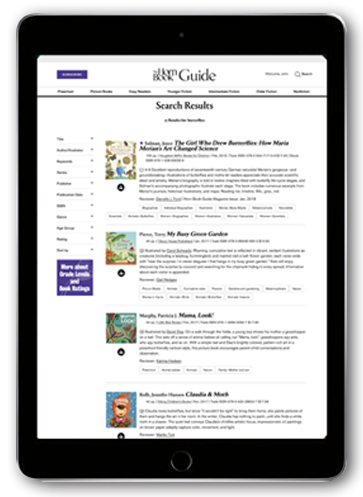Baer, Ralph
3 Reviews
 Hannigan, Kate
Hannigan, Kate
Blips on a Screen: How Ralph Baer Invented TV Video Gaming and Launched a Worldwide Obsession
(2)
K-3
Illustrated by
Zachariah OHora.
To today's young readers, a video game played on a television screen probably seems like something that's existed forever, but this picture-book biography introduces readers to the individual to whom all gamers owe a debt of gratitude. After fleeing Nazi Germany as a teenager, Rudolf Baer changed his first name to Ralph and used his talent for electronics to work as a radio operator during World War II. After the war, Baer studied early television technology and became a military engineer. He first conceived of his TV video game idea in 1966 and spent the next five years experimenting, testing, and prototyping his invention. Hannigan's (A Lady Has the Floor) text conveys Baer's determination and relentlessness as he works through multiple iterations of his video game box. OHora's recognizable acrylic paint illustrations (Goodnight Veggies, rev. 3/20; Dogs at Work, rev. 9/21), using a limited palette of yellow and blue contrasting with subdued greens, reds, and pinks, help set the story in its historical context. Back matter includes photos, four pages of questions and answers about Baer and his work, a timeline, and a list of resources.
Reviewer: Eric Carpenter
| Horn Book Magazine Issue:
March, 2022
(4)
K-3
I Like Inventors! series.
These introductions to the people who came up with innovations we take for granted provide very basic information about their lives, such as their upbringing and motivations, as well as their inventions; there's little about processes, giving readers no sense of the magnitude of their achievements. Photos, many archival, are included in every spread. A related activity ends each title. Reading list, websites. Glos., ind. Review covers these I Like Inventors! titles: Who Invented Home Video Games?, Who Invented Television?, Who Was the Hair-Care Millionaire?, Who Fixed Babies' Hearts?, and Who Invented the Ferris Wheel?.
Reviewer: Gail Hedges
(4)
K-3
Genius at Work! Great Inventor Biographies series.
These volumes provide basic information about inventors who, though well known today, initially faced great opposition. The inspiring histories of determined individuals, described in accessible if a bit simplistic texts, are augmented by archival photographs. Source material for each volume is unfortunately lacking. Reading list, timeline, websites. Glos., ind. Review covers these Genius at Work! Great Inventor Biographies titles: The Cornflake King, The Guy Who Invented Home Video Games, Hair-Care Millionaire, Helicopter Man, The Man Behind the Gun, and Sign Language Man.
Reviewer: Barbara Barstow
3 reviews
We are currently offering this content for free. Sign up now to activate your personal profile, where you can save articles for future viewing.





